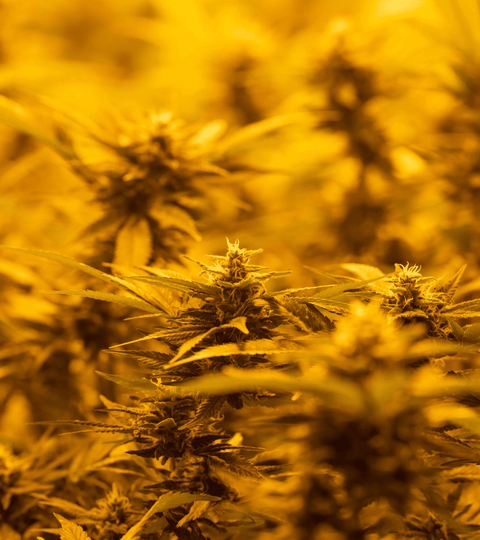The Art of Cannabis Harvesting: When to Harvest Cannabis - Essential Tips and Techniques
Table of Contents
- Introduction
- Timing is Everything
- Essential Tools and Techniques
- Post-harvest Handling
- Frequently Asked Questions (FAQs)
- How long does the cannabis harvesting process usually take?
- How can I tell if I've harvested my cannabis too early or too late?
- What's the best way to store cannabis after it's been harvested?
- Can I use a regular microscope or magnifying glass to inspect trichomes?
- What happens if my harvested buds get moldy during the curing process?
- Can I speed up the drying process with heat or fans?
- I've harvested my plant. Can I regrow it?
- How does the strain of cannabis affect the harvesting process?
- Is it possible to taste test the cannabis before it's fully cured?
- What should I do with the leaves trimmed during the harvest?
- Conclusion
Introduction
Cannabis cultivation, when done properly, is a labor of love that combines the science of horticulture with the appreciation for a natural and organic process. This intricate dance of nature and nurture reaches its climax at the harvest stage - a critical juncture that can make or break the quality of the final product. When is the best time to harvest? How can one maximize the plant's potential? This article explores the art of cannabis harvesting, focusing on the best time to harvest cannabis, the tools needed for cannabis harvesting, and techniques to increase cannabis yield
Quick Note: Whether you’re a novice or a seasoned grower, Goldleaf’s Grow Jotter was created to empower you to make informed daily, weekly, and monthly decisions by tracking every pertinent variable that influences the outcome of a grow cycle.
Timing is Everything
The first and foremost rule of cannabis harvesting is timing. Harvest too early and you risk immature buds with lower potency; harvest too late and you could face a decline in THC levels and a potential rise in the sleep-inducing compound, CBN.
So, when is the perfect time to harvest? The age-old method is to monitor the color of the trichomes - the small resin-secreting glands on the buds. Starting out clear, trichomes turn a cloudy white when the THC content is at its peak, indicating the perfect harvest window. Eventually, they turn amber, indicating a decline in THC and a rise in CBN.
While trichomes' color provides a macro-level cue, each strain of cannabis has its unique harvest time that can range from eight to fourteen weeks. Therefore, familiarizing yourself with the specific strain's growth timeline is crucial.
Remember, different cannabis strains have unique growth timelines that span from eight to fourteen weeks. Thus, it is crucial to be aware of the specific strain's growth timeline.
Essential Tools and Techniques
At the heart of a successful harvest are the right tools and techniques. Invest in a jeweler's loupe or a digital microscope to inspect the trichomes accurately. Additionally, arm yourself with sharp and clean pruning shears to make precise cuts and reduce the risk of plant infection.
When it comes to the technique, there are two common approaches: "whole plant" and "selective" harvesting. In the "whole plant" method, the entire plant is cut down at once. This method is simple and quick, suitable for plants maturing evenly.
On the other hand, "selective harvesting" involves cutting only the mature buds and allowing the rest to mature further. This technique is more labor-intensive but can result in a more bountiful yield, especially for plants that mature unevenly.
Post-harvest Handling
The journey doesn't end at the harvest. Proper handling of the harvested buds is crucial in maintaining the quality of your yield. Ensure you dry your buds slowly in a well-ventilated, cool, and dark environment, aiming for about 60% humidity and 70°F (21°C). The slow drying process allows the chlorophyll in the plant to break down, enhancing the smoothness and flavor of the final smoke.
Once dried, the buds need to be cured - stored in an airtight container and kept in a cool, dark location. Over the course of a few weeks, open the containers regularly to let the buds "breathe," and check for mold. This process allows the remaining chlorophyll to break down further and moisture to escape, enhancing the bud’s flavor and potency.
Frequently Asked Questions (FAQs)
Q. How long does the cannabis harvesting process usually take?
Harvesting cannabis can take a few hours to several days, depending on the number of plants and the harvesting method used. However, the process leading up to the harvest - drying and curing - can take several weeks to complete.
Q. How can I tell if I've harvested my cannabis too early or too late?
Early harvested cannabis often has a slightly 'green' taste and may not have reached its full potency. The effects might be more 'heady' and less nuanced. Overly late harvested cannabis, on the other hand, may have a more narcotic, couch-lock effect due to the degradation of THC to CBN.
Q. What's the best way to store cannabis after it's been harvested?
Cured cannabis should be stored in a cool, dark place in airtight glass jars. Regularly check your cannabis for any signs of mold or mildew.
Q. Can I use a regular microscope or magnifying glass to inspect trichomes?
While a regular microscope or magnifying glass can help, they may not provide the level of detail required. A jeweler's loupe or a digital microscope with 50-100x magnification is ideal for viewing trichomes.
Q. What happens if my harvested buds get moldy during the curing process?
Moldy buds are unsafe for consumption. If you see or smell mold, you should discard the affected buds immediately. To prevent mold growth, maintain the right humidity levels during curing and ensure your buds are not overly dense or moist when you begin the curing process.
Q. Can I speed up the drying process with heat or fans?
While it's possible to speed up the drying process, doing so can negatively impact the quality of your final product. Slow, patient drying leads to smoother, tastier, and more aromatic buds.
Q. I've harvested my plant. Can I regrow it?
No, once a cannabis plant has been harvested, it will not regrow. You can, however, clone your cannabis plants before they begin to flower to create a genetically identical plant.
Q. How does the strain of cannabis affect the harvesting process?
Different strains have unique growth characteristics and timelines. Some strains might flower quicker, requiring a shorter growth cycle before harvest, while others may take longer to reach full maturity. Familiarizing yourself with the specific growth pattern of your chosen strain will enable a more successful harvest.
Q. Is it possible to taste test the cannabis before it's fully cured?
While you can technically smoke cannabis as soon as it's dry, the taste, aroma, and overall experience will be significantly improved if you let the cannabis cure properly.
Q. What should I do with the leaves trimmed during the harvest?
Many growers use the trimmed leaves to make cannabis-infused products like edibles, tinctures, or topicals. Even though these leaves are less potent than the buds, they still contain cannabinoids and terpenes.
Conclusion
In the art of cannabis harvesting, every choice matters - from the harvesting method to post-harvest handling. Like any art form, it demands patience, practice, and an intuitive understanding of the medium, in this case, the cannabis plant. With the right approach, harvesting time transforms from a stressful decision into a fulfilling finale of the cultivation process, bringing forth the best characteristics of your chosen strain. It’s at this moment that the grower truly becomes an artisan, crafting a unique expression of nature’s bounty. The art of cannabis harvesting, therefore, becomes not just a means to an end, but a journey in itself - a quest for perfection in every bud.
DONT FORGET! Checkout our Grow Planner and Grow Jotter, first-of-its-kind grower journals designed specifically for home cannabis cultivation, will ensure that your garden stays on track as your plants mature from seedlings into the vegetative stage and then go on to bud and harvest.




